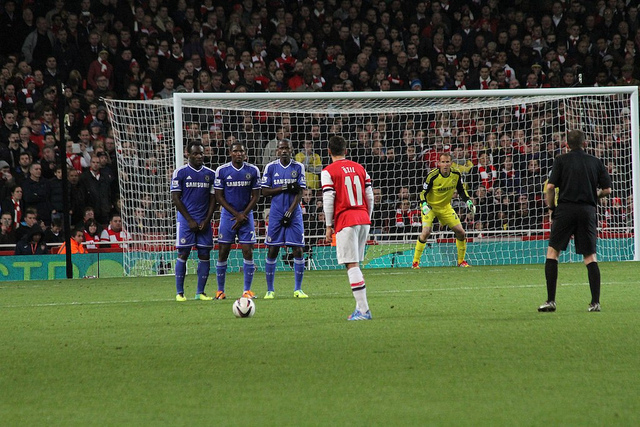Unlock the Magic in Your Story Now
Get the Free 20 questions to Ask Before Launching Your Idea workbook when you sign up for occasional updates.
Get the Free 20 questions to Ask Before Launching Your Idea workbook when you sign up for occasional updates.
Articles filed in: Strategy
Mean It Like You Say It
filed in Marketing, Storytelling, Strategy
 The Sunday ice-cream scooper at the gelato place on Spring Street makes new customers sample every flavour before they buy anything. She knows her gelato inside and out. Her enthusiasm is infectious. She reels off the most popular flavours and tells stories about how pistachio lovers always return to pistachio having tried everything else because it’s that good. Sunday scooper believes in her product. She may only work one day a week in the lowliest position in the company but training her to love the gelato is the best investment the boss has ever made.
The Sunday ice-cream scooper at the gelato place on Spring Street makes new customers sample every flavour before they buy anything. She knows her gelato inside and out. Her enthusiasm is infectious. She reels off the most popular flavours and tells stories about how pistachio lovers always return to pistachio having tried everything else because it’s that good. Sunday scooper believes in her product. She may only work one day a week in the lowliest position in the company but training her to love the gelato is the best investment the boss has ever made.
Far too often we fail to think deeply about and celebrate what differentiates us from others, and so we flounder when it comes to articulating our value. If we’re telling a story we believe in, it shows. There is no better marketing strategy.
When you say it, do you mean it?
Imange by Alpha.
The Incremental Advantage
filed in Marketing, News, Storytelling, Strategy
 Despite what we know about how distracted our customers can be and how endless their choices are, when it comes to our messaging and marketing, we often overestimate our ability to cut through. You only have to spend five minutes watching someone scrolling through a feed on their smartphone (try it), or see how the guy reading a newspaper at your local cafe bypasses most of the content to get to the parts that interest him, for the reality we’re facing to sink in.
Despite what we know about how distracted our customers can be and how endless their choices are, when it comes to our messaging and marketing, we often overestimate our ability to cut through. You only have to spend five minutes watching someone scrolling through a feed on their smartphone (try it), or see how the guy reading a newspaper at your local cafe bypasses most of the content to get to the parts that interest him, for the reality we’re facing to sink in.
Instead of framing this as a challenge see it as an opportunity. Great innovators, committed business owners and unselfish marketers can thrive by planning to engage more deeply with their audience over time. The promise of the digital marketing era was that it would be faster and cheaper to reach more people. That promise didn’t guarantee deeper engagement, loyalty and more sales.
Now more than ever, even in a fast-paced digital world there is no time for marketing emergencies. We still make progress in increments.
Image by Jeroen Looyé.
Why Your Business Needs A Set Piece Plan
 David Beckham scored 114 goals over the course of his 20-year football career. More than half of those goals were a result of what’s known as a ‘set piece’. A ‘set piece’ is a carefully orchestrated and practised move in a team game that returns the ball to play. Beckham became an outstanding player because of his dedication to rehearsing exactly what he would do when a particular situation arose in the game.
David Beckham scored 114 goals over the course of his 20-year football career. More than half of those goals were a result of what’s known as a ‘set piece’. A ‘set piece’ is a carefully orchestrated and practised move in a team game that returns the ball to play. Beckham became an outstanding player because of his dedication to rehearsing exactly what he would do when a particular situation arose in the game.
Having a ‘set piece’ plan can help us to excel in many areas of both business and life, but we rarely take advantage of it. Every day you experience average customer service that could be transformed with a ‘set piece’ plan. On Saturday when I was out to breakfast with my family we asked for a side of honey with our toast. The waiter said he would bring it right away. There was still no sign of the honey long after the toast was demolished. Of course, in the scheme of things the forgotten honey is a tiny thing, but those little things add up. They become the stuff of your brand story—the things customers remember (and share) about your business and the experience they had. The good news is it’s easy to create and implement a plan that fixes the problem so your service can be as consistent as David Beckham’s free kicks.
How To Create A Simple Set Piece Plan
1. Make a list of the most common customer service requests or interactions you’d like to improve.
2. Pinpoint the source of the disappointment.
3. Create a simple ‘if-then’ plan that details the ideal way to handle the situation.
- If a customer complains, first we do x, then we follow up with yz.
- If a customer knocks on the door five minutes before we open, then we…
- If we make a mistake with an order, then…
4. Assess how effective your ‘set piece’ plan is by measuring how empowered your team feels and also by monitoring customer satisfaction.
The brands that delight us anticipate and plan for what’s about to happen next long before it does.
Image by Ronnie MacDonald.
The First Law Of Good Marketing
 We can tie ourselves up in knots wondering and worrying about how to communicate our value to prospective customers. Which marketing tactics should we use? How can we improve our product descriptions? What’s the best strategy for converting leads to sales? How can we ‘get more eyeballs’ on our content? While these are all valid questions, the best marketing happens when we flip our ‘more eyeballs’ obsession on its head.
We can tie ourselves up in knots wondering and worrying about how to communicate our value to prospective customers. Which marketing tactics should we use? How can we improve our product descriptions? What’s the best strategy for converting leads to sales? How can we ‘get more eyeballs’ on our content? While these are all valid questions, the best marketing happens when we flip our ‘more eyeballs’ obsession on its head.
The first law of good marketing is to show people that you see them, instead of constantly trying to make them see you.
Women’s shapewear that reduces visible panty lines and unsightly bulges says. ‘I see you’.
Good quality razors at a fair price say, ‘I see you’.
The ‘skip intro’ button on your favourite show says, ‘I see you’.
One-click ordering says, ‘I see you’.
You become a more insightful innovator as well as a better marketer when you can show customers that seeing and hearing them is your number one priority. How are you letting your customers know that you see them?
Image by Ana Fuentes.
Depth Over Reach
filed in Marketing, Storytelling, Strategy
 It’s pouring rain on the morning the free weekly lifestyle magazine is stuck through the railings of every home on every street in our neighbourhood. So the 20% of people who would normally flick through it over morning coffee won’t bother to open the magazine today. The soggy newsprint goes straight into the recycling bin. This is not the story the magazine’s ad sales team will tell prospective advertisers. Their data will talk up the power of building brand awareness and increasing reach as a reliable business growth strategy.
It’s pouring rain on the morning the free weekly lifestyle magazine is stuck through the railings of every home on every street in our neighbourhood. So the 20% of people who would normally flick through it over morning coffee won’t bother to open the magazine today. The soggy newsprint goes straight into the recycling bin. This is not the story the magazine’s ad sales team will tell prospective advertisers. Their data will talk up the power of building brand awareness and increasing reach as a reliable business growth strategy.
The recorded message outside the chiropractor’s office on Victoria Street interrupts every passer-by day or night. He can even reach those making their way home from a big night out at 2 am on Saturday at no additional cost. You just never know who might be walking past at any given moment. And there lies the problem—just like the lifestyle magazine, the chiropractor’s business growth strategy is focused on reach instead of depth. It prioritises the unknowns above the knowns. Both companies have decided that interrupting the most people is the safest marketing strategy. They are ignoring opportunities to deepen relationships with the people who are already interested or invested in their services because they mistakenly believe more is a shortcut to mattering.
How are you prioritising depth over reach in your business?
Image by Alfred Lui.
What Are You In A Hurry To Do?
 In our world of infinite information and seemingly endless opportunities there’s a temptation to fill every moment—to make every available second a productive one. So we multitask. We eat at our desks instead of taking a break. We always listen to podcasts on our commute, neglecting to pay attention to what’s going on around us. We defer to experts for opinions or advice before stopping to question our values first. We aim to optimize every second because we fear missing out, all the while forgetting what we were actually in such a hurry to do.
In our world of infinite information and seemingly endless opportunities there’s a temptation to fill every moment—to make every available second a productive one. So we multitask. We eat at our desks instead of taking a break. We always listen to podcasts on our commute, neglecting to pay attention to what’s going on around us. We defer to experts for opinions or advice before stopping to question our values first. We aim to optimize every second because we fear missing out, all the while forgetting what we were actually in such a hurry to do.
Sometimes the best course of action is to do nothing. To give yourself a moment to think and remember why you started. Sometimes, probably more often than you realise, you are your own best guide. And occasionally standing still is the best optimization strategy.
Image by Geraint Rowland.
Don’t Be Afraid To Start Small
 On a rainy Monday early in December 1955, 40,000 African-Americans boycotted the public bus services in the town of Montgomery to protest the arrest of 42-year-old Rosa Parks who refused to give up her seat to a white passenger. Their boycott lasted 381 days until the city repealed its law requiring segregation on public buses. Rosa Parks’ story is one of the most enduring examples we have of the power of one person to change everything.
On a rainy Monday early in December 1955, 40,000 African-Americans boycotted the public bus services in the town of Montgomery to protest the arrest of 42-year-old Rosa Parks who refused to give up her seat to a white passenger. Their boycott lasted 381 days until the city repealed its law requiring segregation on public buses. Rosa Parks’ story is one of the most enduring examples we have of the power of one person to change everything.
We tend to forget that the ‘power of one’ rule also applies to revolutions in the commercial world. Philip Mills choreographed his first barbell workout in the remote city of Auckland, New Zealand in 1990. Today he is the CEO of Les Mills International—the hugely successful global fitness brand, with over 130,000 certified instructors delivering classes to more than 6 million people every week in more than 100 countries around the world. To put that into perspective, the population of New Zealand today stands at 4.5 million.
It’s natural to want to get your product into the hands of everyone who needs it. But thinking about how to influence the masses leads to missteps in understanding what’s driving the decisions of the few people you have the best chance of reaching and impacting right now. Like any revolution, success happens one user, one customer, one raving fan at a time. Never be afraid to start small.
Image by Jasperdo.
Why The Realistic Marketer Wins
filed in Marketing, Strategy, Success
 Marketing shoulders heavy burden in any business regardless of size. We expect our marketing efforts to make more customers aware of our brand and to grab their attention. Not only that, we want our marketing to create trust, differentiate our products, communicate value and change people’s minds. Marketing must also convince strangers to choose us and part with their money. And we want it all to happen as quickly as possible with the minimal investment and effort.
Marketing shoulders heavy burden in any business regardless of size. We expect our marketing efforts to make more customers aware of our brand and to grab their attention. Not only that, we want our marketing to create trust, differentiate our products, communicate value and change people’s minds. Marketing must also convince strangers to choose us and part with their money. And we want it all to happen as quickly as possible with the minimal investment and effort.
This is a big ask, and it’s also the reason we fail when we prioritise tactics over a sustainable marketing strategy.
The realistic marketer doesn’t think this way. He doesn’t believe in quick wins and overnight successes. He obsesses about how to make positive changes in the lives of his customers before crafting clever copy. He learns to question how the people he cares about serving feel before expecting them to act. He puts values before virality and transparency before tactics. The realistic marketer intentionally sets out to make a difference one person at a time. He realises his urgent need does not motivate his potential customers. He understands that delight trumps data every day of the week, so he doubles down on making things people love, instead of trying to make people love the things he makes. The realistic marketer knows that trust scales and belonging is a competitive advantage, which is why he plans to play the long game.
The realistic marketing mindset is open to each one of us. We get to choose our attitudes and actions. It’s worth remembering what we prioritise today changes the impact we make tomorrow.
Image by Christopher Cook.
The Two Questions Behind Every Successful Product And Service
filed in Innovation, Marketing, Strategy
 There’s a subtle difference between a product or service that stems from an idea and one that’s born from recognising an opportunity. Ideas are solutions in search of problems. Opportunities are problems begging for a solution. The magic of solving problems for a specific customer is that the marketing is baked into the product.
There’s a subtle difference between a product or service that stems from an idea and one that’s born from recognising an opportunity. Ideas are solutions in search of problems. Opportunities are problems begging for a solution. The magic of solving problems for a specific customer is that the marketing is baked into the product.
Like many disruptive companies, the team at Dollar Shave Club created a compelling product, innovative business model and viral marketing campaign simply by understanding their customer’s pain points.
We find opportunities when we look for problems to solve, by asking the following two questions:
1. What’s happening that shouldn’t be?
2. What’s not happening, that should be?
In the case of Dollar Shave Club, the answers were clear. The razor blade market was dominated by a few legacy brands who had no direct relationship with their customers. Men were paying a lot of money for shave tech they didn’t need. Buying expensive razor blades didn’t necessarily guarantee a better shaving experience. Shopping for razors and replacing blades wasn’t as convenient as it could be. The startup disrupted the market by addressing these unmet needs.
The utility, quality and success of our products and services improve when we pay attention to what’s missing in our customers’ lives.
What gaps can you fill for your customers?
[Learn more about turning your insights into successful products and services in my new book, Hunch].
Image by Thomas Hawk.
The Number One Way To Create Brand Awareness
filed in Marketing, Storytelling, Strategy
 There was something peculiar about the SoHo hotel where I stayed on my recent overseas trip. I didn’t see a single child for the length of my stay. Nowhere in their marketing does the management specify their property is unsuitable for children and yet because they are uncompromising about going all the way to the edges in everything they say and do—the potential customer knows.
There was something peculiar about the SoHo hotel where I stayed on my recent overseas trip. I didn’t see a single child for the length of my stay. Nowhere in their marketing does the management specify their property is unsuitable for children and yet because they are uncompromising about going all the way to the edges in everything they say and do—the potential customer knows.
The best way to create brand awareness is to make a product or service that’s designed to please a particular audience and to do it without compromising. That’s easy to say and hard to do. When you have two hundred rooms to fill and bills to pay, fear sets in and is closely followed by a compromise. That compromise not only dilutes the potency of your brand, it subconsciously creates a disconnect in the mind and heart of the right customer. You can’t imagine seeing a T-bone steak on the menu at a vegan restaurant. It would never happen under any circumstances. That’s the essence of great branding—to build something that feels like it’s just for a particular kind of person. Someone who wants their choices to reflect their values and to be made to feel like an insider.
Back to the SoHo Hotel. Everything from the size and layout of the guest rooms to beautifully lit communal lounges that doubled as coworking spaces and the items on the menu was intentional. The best way to create brand awareness is to understand who your product is for and to only speak to that person. Awareness isn’t about getting the most people to try your product. It’s about making something the right people fall in love with and can’t help talking about.
What are you doing to make your insiders feel like they belong?
Image by Yann Jouanique.